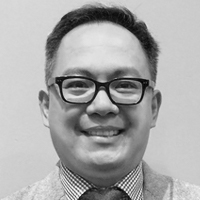This text based course is a transcript of the live webinar titled "Assessment of Postural Control in the Geriatric Population", presented by Salvador Bondoc, OTD, OTR/L, BCPR, CHT, FAOTA.
Introduction
It is my pleasure to be in your virtual presence to talk about a topic of which I am quite passionate. Although I am in full-time academia, I am very active in the clinic where I see issues firsthand and can test solutions. One of those issues is postural control in the geriatric population. Although this topic is about assessment, I hope our discussion will stimulate ideas for intervention planning. I like to paraphrase Dr. Joan Rogers who stated, "you cannot treat what you did not assess". Sure we can conduct our evaluation using standardized tools and some general assessment measures, but if you do not see the nature of the problem, you are wasting your time and your patient’s time, as well as their insurance dollars. I hope that through this presentation you gain a much deeper understanding of postural control as it impacts the geriatric population.
Objectives
By the end of this two hour program, you should be able to describe the Dynamic Model of Balance and Postural Control, state age-related balance impairments associated with older adults, and apply evidence-based assessments as well as the Dynamic Model when evaluating balance and mobility impairments in older adults.
Outline
To give us a structure for our presentation, our outline is as follows. First we are going to talk about the overview of balance and postural control, and then we are going to look at some age-related issues. We also will eventually talk about evidence-based assessments. During the overview, we will focus on an integrated model of balance and postural control. I like to use the term integrated, because we want to put together all the various elements to get a full picture.
Overview of Balance and Postural Control
As OT practitioners, why should we care about balance and postural control? I cringe when I hear an OT say that PTs do that stuff or when they say PTs have more expertise in that area. Often documentation will say, “Referred to PT evaluation,” or something like that. While I do have tremendous respect for our PT colleagues, and yes they do have the expertise in the area, we do as well. Therefore we need to invest our time in understanding this better and also take ownership of this area of performance. We need to conduct our own assessments, because our interventions are just as important and medically necessary. Balance and postural control is not just used for gait and mobility. Balance and postural control are essential for everyday life activities. In order for us to engage in functional activities, we need to be able to maintain some degree of postural control. In fact, I would say postural control is a prerequisite for all functional activities.
